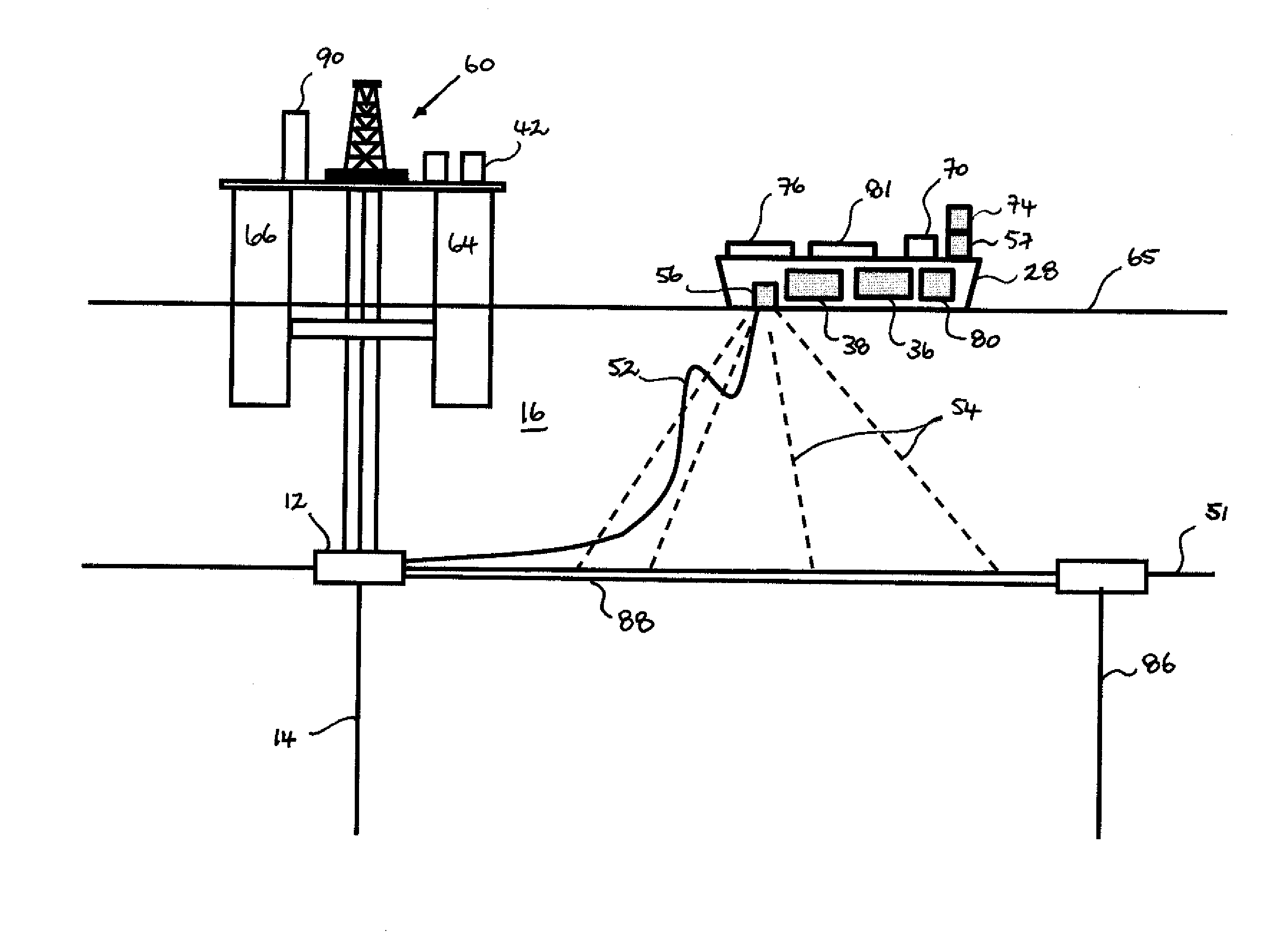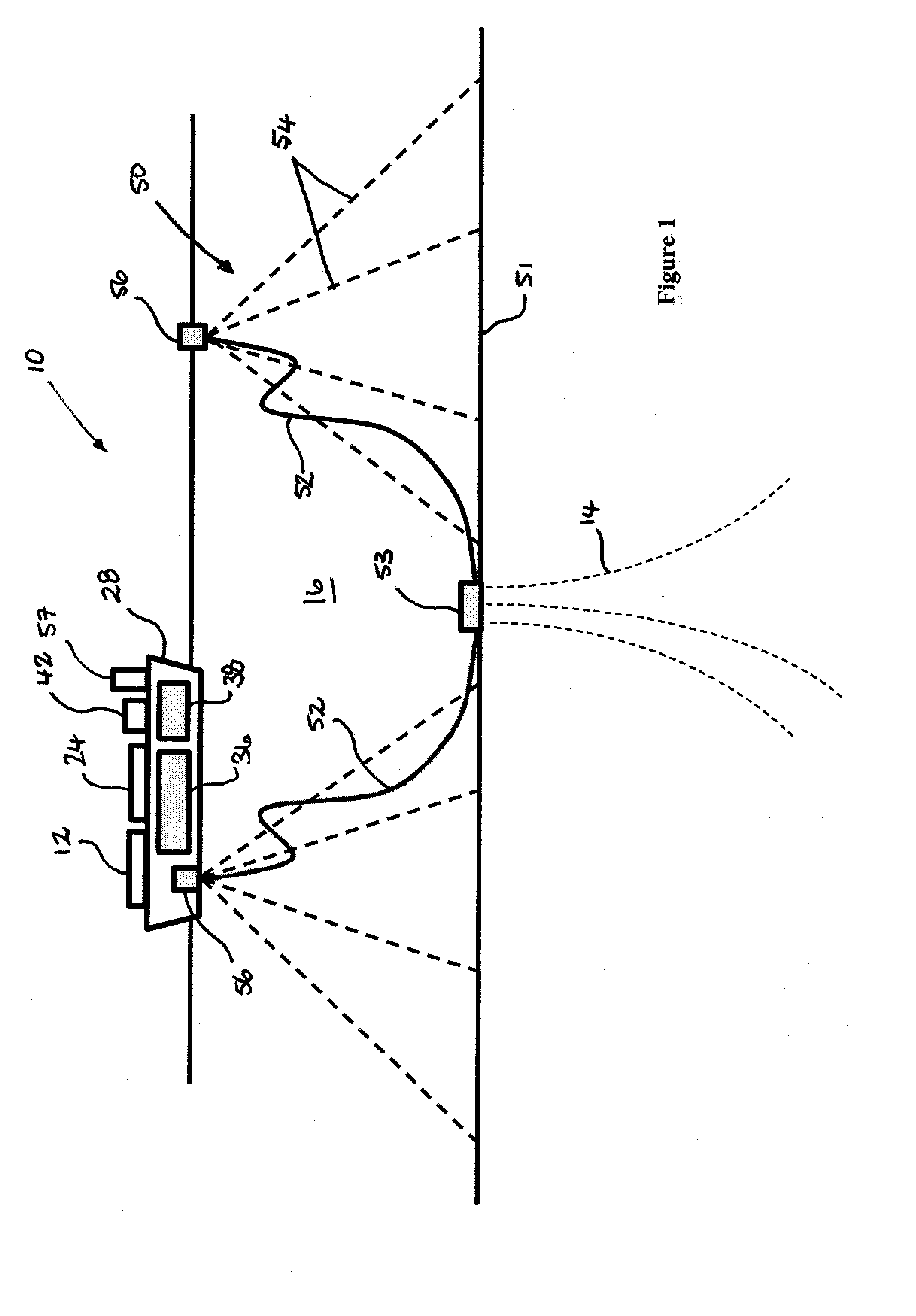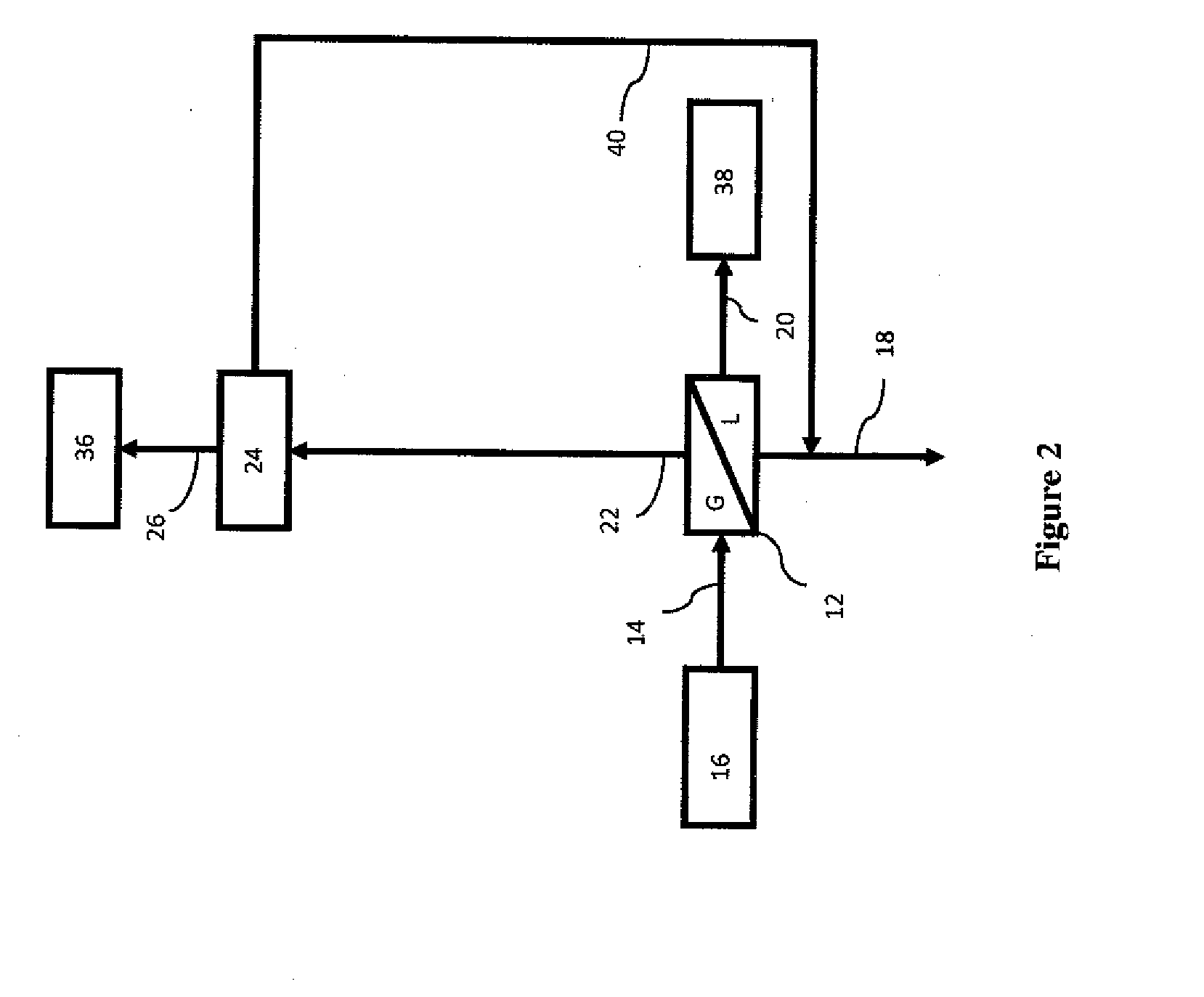Method of marine transportation of unsweetened natural gas
a transportation method and natural gas technology, applied in the direction of container discharging methods, special purpose vessels, borehole/well accessories, etc., can solve the problems of prohibitively expensive floating lng concepts for the monetisation of stranded gas reserves, the complexity of the topside of the floating vessel is so prohibitively expensive, and the quarters of the world's known offshore gas reserves of natural gas remain undeveloped
- Summary
- Abstract
- Description
- Claims
- Application Information
AI Technical Summary
Benefits of technology
Problems solved by technology
Method used
Image
Examples
first embodiment
[0055]In the present invention which is now described with reference to FIGS. 1 and 2, the gas containment system (36) and the condensate containment system (38) are both located onboard the gas carrier vessel (28). The first operating pressure of the gas containment system (36) is in the range of 200 to 250 bar (2900 to 3600 psi) with the first storage temperature being at or above ambient temperature. Using this embodiment of the system and method of the present invention, the raw natural gas is maintained in gaseous form in stark contrast to prior art offshore LNG and CNGL solutions. Again, this is done in order to keep the topside complexity of the gas carrier vessel to a minimum and reduce the costs associated with construction and operation of low temperature or cryogenic liquid containment systems. Under these conditions of temperature and pressure, the dehydration unit (24) takes the form of a circulating glycol system using a liquid dessicant dehydration system, for example...
second embodiment
[0064]the present invention is now described with reference to FIG. 5 in which the gas / liquid separator (12), the optional compression facility (42) and the dehydration unit (24) are located on a floating structure (60). Locating the gas / liquid separator (12), the dehydration unit (24) and the compression facility (42) on the floating structure (60) is done to keep the topsides infrastructure required onboard the gas carrier vessel (28) to an absolute minimum to reduce both the cost and the complexity of the gas carrier vessel (28). The floating structure (60) is provided with a buffer gas containment system (64) for storage of a portion of the partially dehydrated unsweetened natural gas stream (26) pending return of a gas carrier vessel (28). The floating structure (60) may be further provided with a buffer liquid containment system (66) for storage of a portion of the unstabilised condensate stream (20) or stabilised condensate pending return of a gas carrier vessel (28). Example...
third embodiment
[0065]the present invention which relies on the chilling of the unsweetened gas is now described with reference to FIG. 6. In this embodiment, the first operating pressure of the gas containment system is in range of 100 to 150 bar (1450 to 2100 psi) and the first operating temperature is below zero degrees Celsius, preferably in the range of −25 to −40 degrees Celsius. In this embodiment, there is no requirement to subject the unstabilised condensate stream to chilling prior to storage in the condensate containment system. To achieve these low temperatures, the dew-pointed unsweetened natural gas stream (22) is subjected to chilling using a chiller (70) prior to the storage of at least a portion of the partially dehydrated unsweetened natural gas stream (26) in the gas containment system (36). Chilling of the dew-pointed unsweetened natural gas stream requires a high selected level of dehydration of less than 5 mg / Sm3. One way of achieving this high level of dehydration is through ...
PUM
 Login to View More
Login to View More Abstract
Description
Claims
Application Information
 Login to View More
Login to View More - R&D
- Intellectual Property
- Life Sciences
- Materials
- Tech Scout
- Unparalleled Data Quality
- Higher Quality Content
- 60% Fewer Hallucinations
Browse by: Latest US Patents, China's latest patents, Technical Efficacy Thesaurus, Application Domain, Technology Topic, Popular Technical Reports.
© 2025 PatSnap. All rights reserved.Legal|Privacy policy|Modern Slavery Act Transparency Statement|Sitemap|About US| Contact US: help@patsnap.com



